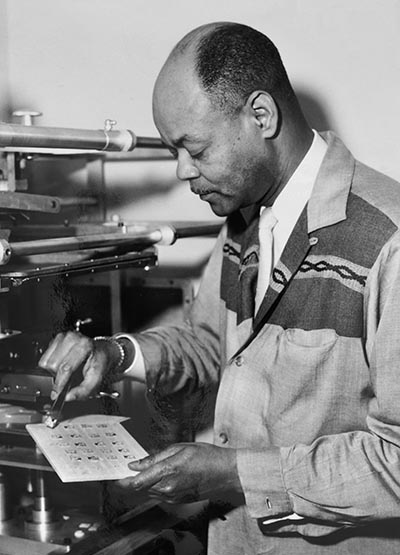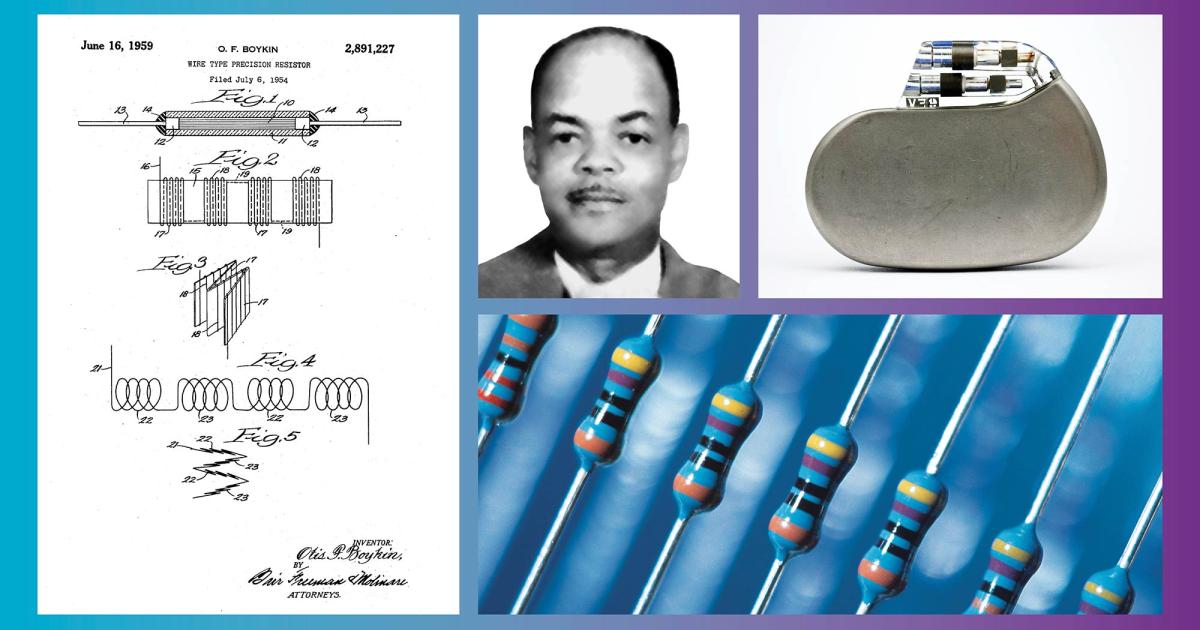
Otis Boykin: Mr. Resistor
Otis Boykin: Mr. Resistor
Hey there inventors! Today we're going to talk about a scientist named Otis Boykin. Now, you may not have heard of him before, but let me tell you, this guy was a true innovator.
Otis Boykin was born in 1920 in Dallas, Texas, and from a young age, he had a passion for science and technology. He went on to study at Fisk University and later earned his master's degree in physical chemistry at the Illinois Institute of Technology.

But it was when he started working as an inventor that Otis Boykin made some of his most important contributions to the world. He was interested in finding ways to improve electronic control devices for guided missiles and computers. One of Boykin's most notable inventions was the resistor, a passive electronic component that is used to control the flow of electrical current. His resistors were more precise and stable than the other ones available at the time, and they were and still are used around the world in a variety of electronic devices including televisions, radios, and computers. Most notably, however, his work enabled control functions for the first successful, implantable pacemaker.

Boykin’s achievements led him to work as a consultant in the United States and in Paris from 1964 to 1982. Meanwhile, he continued working on resistors until the end of his life. He created an electrical capacitor in 1965 and an electrical resistance capacitor in 1967, as well as a number of electrical resistance elements. He is also known to have created a range of consumer innovations including a burglar-proof cash register and a chemical air filter.
Over the course of his life he earned over 25 patents, his first issued in 1959 and his last in 1985. Boykin died of heart failure in Chicago in 1982.
Despite the obstacles he faced as an African American inventor, Otis Boykin persevered and made a lasting impact on the world. His work in electronics continues to be studied and built upon to this day, and his legacy lives on through the many scientists and researchers who were inspired by his work.
So next time you use a device that relies on precision electronic components such as a computer or a smartphone, remember Otis Boykin and the amazing work he did. He truly made a difference in the world and his legacy will continue to inspire future generations of inventors.


Water Resistance
Materials needed:
- Small cups (enough for each child to have 2)
- Stopwatch or timer
- Coffee stirrer straws (made of same material as drinking straws)
- Drinking straws (made of same material as stirrers)
- Water
What can you spy with your scientific eye? Did you know you can control the flow of electricity? Let’s go!
Instructions:
Explain to the children that Otis Boykin was a scientist and inventor who made important contributions to the field of electronics, particularly in the development of resistors. Boykin invented resistors that allow for a specific amount of electrical current to flow through for a specific purpose and are used in all types of electronic devices, including radios and televisions.
- Cut the drinking straws to the same length as the coffee stirrer straws.
- Have the children work in groups of 2.
- Give each child 2 cups, each filled with the same amount of water (suggested 2 - 4 oz). You can label the cups #1 and #2.
- Give each child 1 coffee stirrer straw and 1 drinking straw (which should be cut to the same length as the coffee stirrer).
- Have child 1 in the group drink the water in cup #1 through the coffee stirrer. Have child 2 in the group time child 1.
- Have child 1 in the group drink the water in cup #2 through the drinking straw. Have child 2 in the group time child 1.
- Now have the children switch roles and repeat the activities.
- Ask the children which was easier.
- Have the compare the times.
- Optional: Grab your Arrrgh Mighty Observation Journal and describe or draw what you see and what you conclude.
- This activity guides students through making connections between water flowing through a straw (a “resistor”) and electric currents flowing through a circuit. See if the children can make these connections on their own. If not, explain to the children that the water represents electricity and that the different straws represent different types of resistors.
This activity is a fun and interactive way to introduce the concept of electrical resistance and how resistors work, it also helps children understand the contributions of Otis Boykin in the field of electronics and the development of resistors. It also encourages teamwork, critical thinking and problem solving skills.


